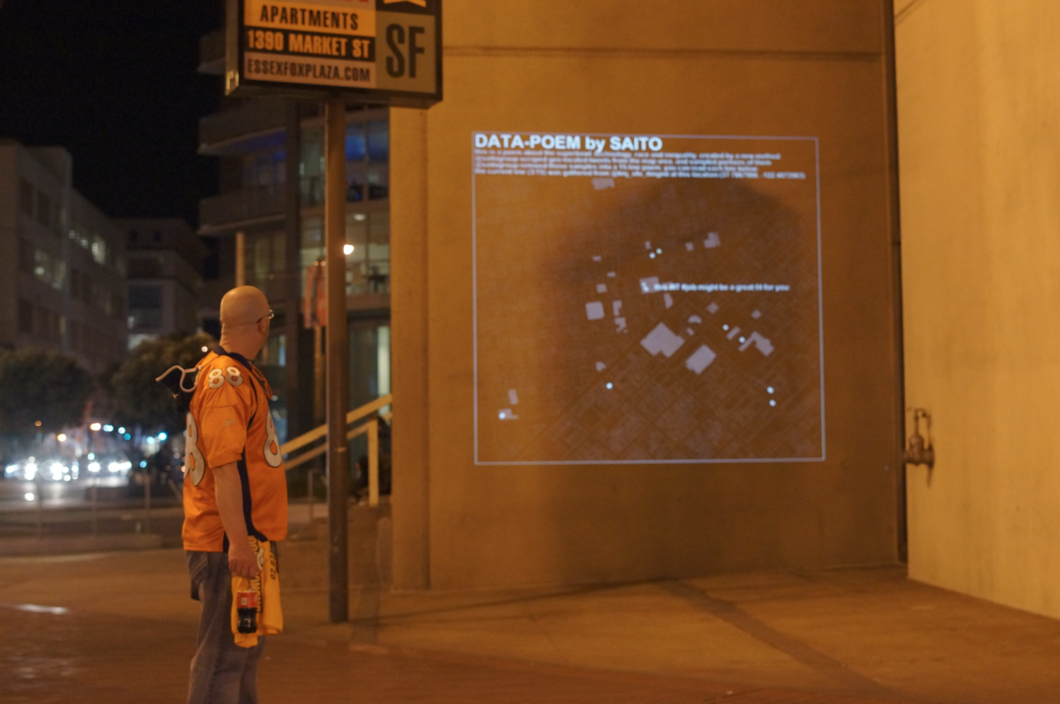
During the Superbowl, Mayor Ed Lee declared the homeless ‘would have to leave the street’ (Good luck moving 6,686 people somewhere else). This statement is emblematic of his administration’s approach. On the one hand, the mayor has created a budget surplus and dramatically reduced unemployment (9.4% to 3.6%). On the other hand, San Francisco now has has the fastest growing income inequality and one of the worst housing crises of any city in the country. A month cannot go by without a tech-worker publicly stating ‘I don’t want to see homeless riff-raff’ and long-term residents declaring that they are facing severe displacement.
During the mayor’s administration, ‘developing’ mid-market has been an important priority. Tax breaks, often referred to as ‘The Twitter Tax Break,’ have helped to move a large group of technology companies onto Market Street: Zendesk, Uber, Twitter, Dolby, Square, Autodesk and Salesforce. This development collides directly against the territorial integrity of the Tenderloin, a low income neighborhood with an activist community that worked to control a significant share of the area’s real-estate. Consequently, it’s not going anywhere any time soon.
From this collision, one sees undeniably powerful images: a guy in a faded leather jacket crooning on heroin right below the Twitter building, two young men on ‘hoverboards’ smoking joints, their LEDs lighting paths through crowds of tech workers in hoodies with logos getting off at 6PM, human shit on the street, two guys in collared shirts stepping over an old woman with a needle in her arm while they talk about how natural language processing and machine learning are going to make the world better, the brightness of the day giving way to the night markets, where people are selling plastic necklaces, sneakers, video cassettes, old clothes, DVDs...
The economic developments on Market St. and in SF in general are undeniably part of a larger national and global trend towards increasing income inequality; however, technological developments originating in Silicon Valley drive this trend. The political class’s almost complete inability at every level to adapt to changing technological conditions worsens the situation; nonetheless, couldn’t San Francisco prove the exception and not the rule? Ironically, the most direct response seems to be coming from the startup incubator YCombinator and its basic income pilot program, but that isn’t good enough.
Saito wonders: where is the party of social futurism? (#SandersMusk2016?!). Where is the party that understands technology, but also has a concern for social justice? Why isn’t it emerging in San Francisco? Is it the Pirate Party? Is it the Green party? Is it a combination thereof? Was it beginning to happen at noisebridge at the “Hack the Left” event? Is it happening at the Sudo Room at the Omnicommons? Is it happening at the Electronic Frontier Foundation? Where is the political response to technology that understands technology? What forces are suppressing or undermining its evolution?

Saito’s installations are meant to galvanize some responses to these questions. (1.) Saito scrapes geo-located tweets on Market St. and the surrounding area using the GeoTweets Tool. (2.) Saito then remixes the tweets into poems, e.g.:
#cityofgold #SuperBowlCity#SB50 glare report for tomorrow: permanent blindness. this #IT #job might be a great fit for you: Manager, Technology Risk. Step aside a moment, breathe some nice breaths, then say "I've got this! I've really, really got this!" Can you locate the Japanese's inspiration of these Western Artists? Was anyone else expecting a wink at the end of the revenant? Gorgeous light art at Yerba Buena Gardens, MLK fountain at the Yerba Buena. Comrades starting shit in SF #yes#shutitdown. Celebration time in superbowl own city. Propaganda, get ready to go on a beautiful journey. Ride or Die #49ers, Face Off.
(3.) Saito tags all the people who ‘participated’ on Twitter, making them aware of the location of the installation. (4.) Saito then displays the poem in a dynamic data-visualization. (5.) Passersby read the poem, take pictures of it on their phones, and talk, both to each other and to Saito. These conversations aren’t exactly a revolution, but free speech and actual confrontation do seem to produce revolutionary consequences.

